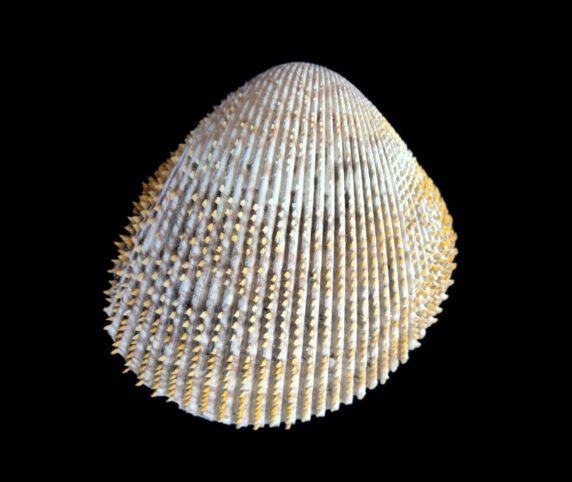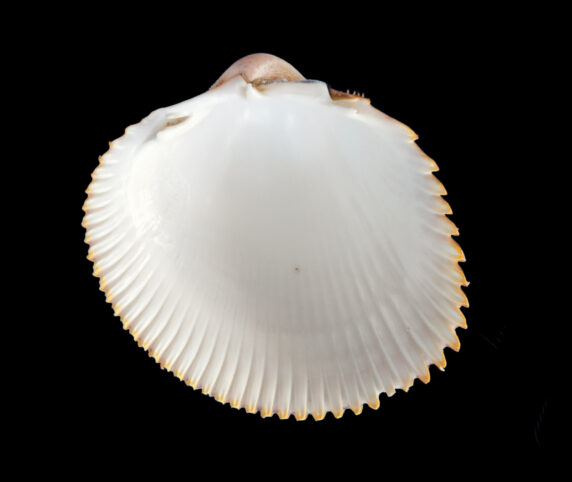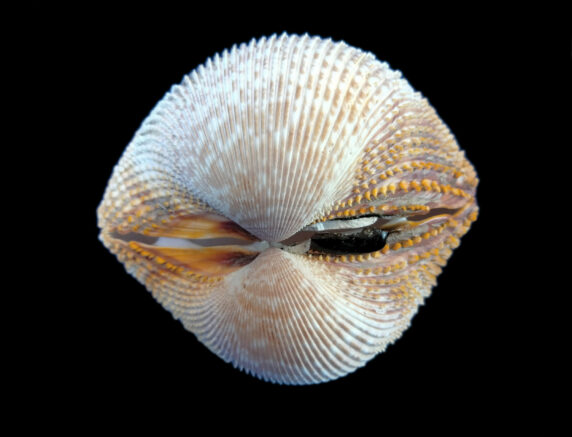Pacific Spiny Cockle Shell, Dallocardia quadragenaria


 Pacific Spiny Cockle Shell, Dallocardia quadragenaria. Shell collected from the beach of Coronado Island, Baja California, October 2022. Size: 11.0 cm (4.3 inches) x 8.3 cm (3.3 inches). Collection, photograph and identification courtesy of Bob Hillis, Ivins, Utah.
Pacific Spiny Cockle Shell, Dallocardia quadragenaria. Shell collected from the beach of Coronado Island, Baja California, October 2022. Size: 11.0 cm (4.3 inches) x 8.3 cm (3.3 inches). Collection, photograph and identification courtesy of Bob Hillis, Ivins, Utah.
The Pacific Spiny Cockle is found within bays and on sandy substrates offshore. They are found intertidally, and to a depths up to 40 m (135 feet). They are suspension feeders that filter plankton and fine detritus from the surrounding water. In Mexico, they are found along the West Coast of the Baja Peninsula, from Tijuana south to Magdalena Bay, and perhaps to the Cape region or Baja California Sur. They have not been documented from the Gulf of California.
Synonyms include Cardium arenatum, Cardium luteolabrum, Cardium quadragenarium, and Trachycardium quadrgenarium.